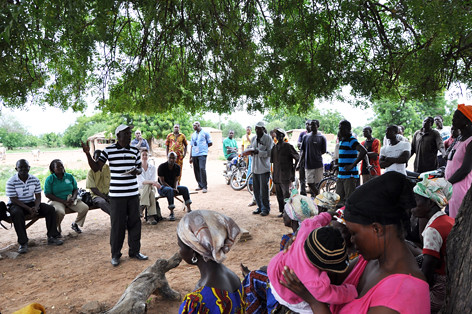Africa RISING sites in Ghana
The project areas in Ghana consist of three administrative regions in the north of the country—the Upper West, the Upper East, and the Northern regions. The whole region is characterized by small land holdings of low input–output farming systems with low yields and household food and nutritional insecurity. Some of the major problems raised by farmers were deteriorating soil fertility and thus declining crop yields.
 The Africa RISING community analysis report in Ghana states that “each region is dominated by cereal–legume cropping systems with livestock also providing an important source of food and cash. Major crop production constraints include low and declining soil fertility, a lack of improved seed, problems of pests, disease, and weeds especially Striga, a lack of draft power and equipment, and the high cost of agri-inputs associated with each. At the same time local communities raised concerns about lack of crop storage facilities, postharvest pest and disease problems, and lack of knowledge about processing with little or no processing equipment, compounded by low market prices, inadequate access roads, and poor transport facilities.”
The Africa RISING community analysis report in Ghana states that “each region is dominated by cereal–legume cropping systems with livestock also providing an important source of food and cash. Major crop production constraints include low and declining soil fertility, a lack of improved seed, problems of pests, disease, and weeds especially Striga, a lack of draft power and equipment, and the high cost of agri-inputs associated with each. At the same time local communities raised concerns about lack of crop storage facilities, postharvest pest and disease problems, and lack of knowledge about processing with little or no processing equipment, compounded by low market prices, inadequate access roads, and poor transport facilities.”
Some of the key interventions identified by Africa RISING were the introduction of several improved sustainable land and livestock management practices supported with training in production, utilization, and processing skills; leadership, marketing, and communication skills to encourage farmer-to-farmer learning and extension; advocacy to promote improved policies to reduce land degradation, improve market infrastructure, and build partnerships.
Story by Katherine Lopez (IITA)
This story was published as part of an Africa RISING special issue of the IITA Bulletin (1 August 2013)




